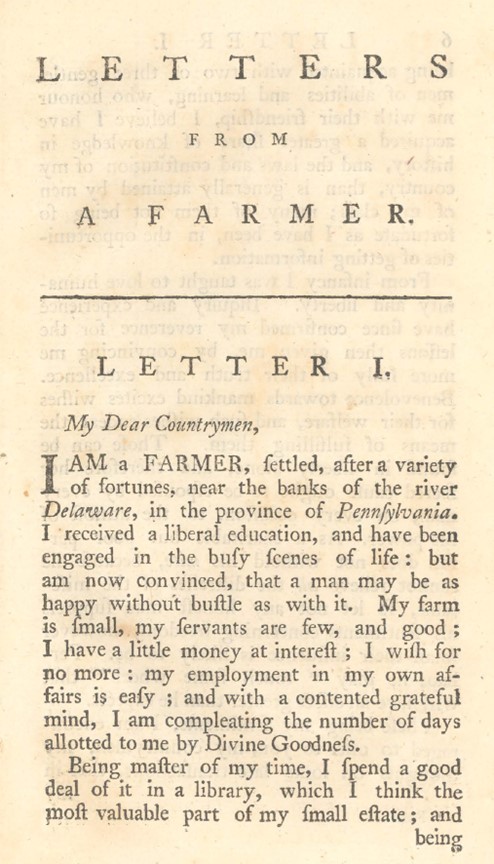As we approach the semiquincentennial (250th) anniversary of the forming of the United States, here is a brief summary of issues and actions that led to the Revolution and the Revolutionary War … this is about No Taxation Without Representation.
The settlers who migrated to and/or resettled in the colonies of Plymouth, Massachusetts, Maine, New Hampshire, Rhode Island and Connecticut paid little to nothing in taxes during the first few decades of their establishment. The English government imposed almost no taxes.
The chartered companies that established the colonies initially collected only quitrents, a land tax originally paid by freemen to the Crown or to the company that held a charter from the Crown. The quitrent, an annual payment of a fixed rate of several shillings for each hundred acres of land, secured a freeman’s title to his land; it was paid in lieu of the services traditionally required by feudal custom.
The early colonies were sparsely settled and even more sparsely administered. The few officials who served did not receive official salaries until sometime in the 1640s. Their compensation came from fees for services rendered. These included issuing court papers, keeping records, arresting and punishing criminals, and issuing licenses.
In the early years, voluntary contributions supported spending on civic activities and church ministers. Too many free riders induced leaders to make contributions compulsory.
Taxpayers were recognized for their contributions; in Dedham, for example, the largest taxpayers received the best seats in church. The small sums collected by colonial governments were spent largely on roads, churches, and schools.
Reflecting the values of the day, a prominent nineteenth-century historian, Richard T. Ely, wrote that “one of the things against which our forefathers in England and in the American colonies contended was not against oppressive taxation, but against the payment of any taxes at all” (emphasis added).
But taxes were not long in coming.
Growing populations in the colonies necessitated defensive measures against Indians and other European intruders, along with the need to build and maintain roads, schools, prisons, public buildings, and ports and to support poor relief. A variety of direct and indirect taxes was gradually imposed on the colonists.
In 1638, the General Court in Massachusetts required all freemen and non-freemen to support both the commonwealth and the church. Direct taxes took two forms: (1) a wealth tax and (2) a poll, or head tax, which in some instances evolved into or included an income tax.
Taxation from the British Parliament
Many authors credit the phrase “No Taxation without representation” to the Boston lawyer and legislator James Otis, Jr. (1725-1783), based on how John Adams recalled Otis’s argument in the writs of assistance case in 1761.
Adams wrote a letter to Otis’s biographer William Tudor, Jr., in 1818. After quoting that letter at length Tudor wrote in his book:
“From the navigation act the advocate [Otis] passed to the Acts of Trade, and these, he contended, imposed taxes, enormous, burthensome, intolerable taxes; and on this topic he gave full scope to his talent, for powerful declamation and invective, against the tyranny of taxation without representation.” (Emphasis added)
(As noted, Otis did raise the issue of where legislatures could fairly tax subjects – but he didn’t use the memorable words “no taxation without representation.”)
This was followed up by declarations at the Stamp Tax Congress in New York in October 1865. The Stamp Act Congress passed a ‘Declaration of Rights and Grievances.’ This claimed that American colonists were equal to all other British citizens, protested taxation without representation, and stated that, without colonial representation in Parliament, Parliament could not tax colonists. In addition, the colonists increased their nonimportation efforts.
In part, they declared,
“That it is inseparably essential to the freedom of a people, and the undoubted right of Englishmen, that no taxes be imposed on them, but with their own consent, given personally, or by their representatives.” (Article III)
“That the people of these colonies are not, and from their local circumstances cannot be, represented in the House of Commons in Great-Britain.” (Article IV)
“That the only representatives of the people of these colonies, are persons chosen therein by themselves, and that no taxes ever have been, or can be constitutionally imposed on them, but by their respective legislatures.” (Article V)
“No Taxation Without Representation,” in the context of British American Colonial taxation, appears in the February 1768 London Magazine’s headline, on page 89, in the printing of Lord Camden’s “Speech on the Declaratory Bill of the Sovereignty of Great Britain over the Colonies.”
Taxation Without Representation Led to War
The American Revolutionary War (1775-1783) was sparked after American colonists chafed over issues like taxation without representation, embodied by laws like The Stamp Act and The Townshend Acts. Mounting tensions came to a head during the Battles of Lexington and Concord on April 19, 1775, when the “shot heard round the world” was fired.
It was not without warning; the Boston Massacre on March 5, 1770 and the Boston Tea Party on December 16, 1773 showed the colonists’ increasing dissatisfaction with British rule in the colonies.
The Declaration of Independence, issued on July 4, 1776, enumerated the reasons the Founding Fathers felt compelled to break from the rule of King George III and parliament to start a new nation. In September of that year, the Continental Congress declared the “United Colonies” of America to be the “United States of America.”
France joined the war on the side of the colonists in 1778, helping the Continental Army conquer the British at the Battle of Yorktown in 1781. The Treaty of Paris ending the American Revolution and granting the 13 original colonies independence was signed on September 3, 1783. (History-com)
Click the following link to a general summary about No Taxation Without Representation:












